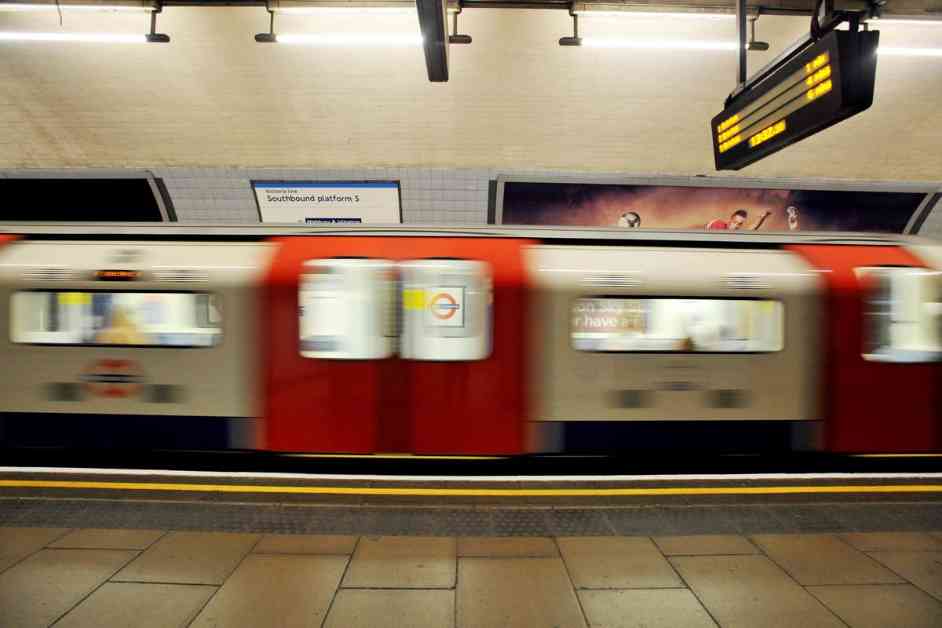Service Disruption on Victoria Line: Updates on ‘Casualty on Track’ Situation
A Victoria Line underground train at Highbury and Islington Station in north London PA ArchiveVictoria Line trains were unable to run during rush hour on Tuesday morning due to a casualty on the track. Transport for London has warned that there is no service on the entire line while the emergency services deal with the incident. Meanwhile, commuters in West London were also unable to use the District Line between Turnham Green and Ealing Broadway on Tuesday morning while TfL fix a signal failure at Ealing Broadway.
Tickets being accepted on trains while Victoria Line is down
Tickets are being accepted on London buses, the London Overground, and train services while the Victoria Line is suspended. Greater Anglia railway has said it is accepting tickets between Tottenham Hale and Liverpool Street. The Standard has reached out to Transport for London, The London Ambulance Service, and British Transport Police to find out more about the incident.
Trains also unable to run on a section of District and Piccadilly Lines
The London Underground network has been hit by further transport disruption. There is currently no service between Acton Town and Rayners Lane on the Piccadilly Line due to signal failure at Ealing Broadway on the District line. The issue is also causing issues on the District Line itself, and there is no service between Turnham Green and Ealing Broadway.
Entire Victoria Line suspended due to casualty
The Victoria Line was suspended shortly before 8 am, when thousands of commuters will be trying to travel to work, due to a casualty on the track. Transport for London told customers: “No service on the entire line while the emergency services deal with a casualty on the track. Tickets are being accepted on London Buses, London Overground, Greater Anglia, Southeastern, and South Western Railway.”
Updates on Victoria Line Service Disruption
The disruption on the Victoria Line caused chaos for commuters during the busy morning rush hour. Passengers were left stranded at stations and forced to find alternative routes to their destinations. The situation was exacerbated by the closure of the District and Piccadilly Lines in certain sections, creating further challenges for those trying to navigate the London Underground network.
Transport for London worked tirelessly to restore services and ensure the safety of passengers. The emergency services were on the scene promptly to deal with the incident on the track, but the impact on the transportation system was significant. As the day progressed, updates were provided to keep commuters informed about the status of the Victoria Line and other affected lines.
Alternative Transport Options
With the Victoria Line suspended and disruptions on other lines, commuters were urged to consider alternative transport options to reach their destinations. London buses, the London Overground, and train services were accepting tickets to help alleviate the strain on the transportation network. Greater Anglia railway also stepped in to assist by accepting tickets between Tottenham Hale and Liverpool Street.
Passengers faced longer journey times and crowded conditions on alternative routes, but the cooperation between different transport providers helped mitigate the impact of the service disruptions. Despite the challenges, commuters showed resilience and adaptability in finding ways to continue their journeys despite the unexpected obstacles.
Collaborative Efforts to Restore Services
Transport for London, The London Ambulance Service, and British Transport Police worked together to manage the situation and ensure the safety of all individuals involved. The coordination between various agencies was crucial in responding effectively to the incident on the track and minimizing the disruption to commuters.
As the emergency services dealt with the casualty on the Victoria Line, engineers were working diligently to fix the signal failure at Ealing Broadway on the District Line. The complexity of the transportation network required a synchronized effort to address the issues on multiple lines and restore normal services as soon as possible.
Impact on Commuters and Businesses
The service disruptions on the Victoria Line and other underground lines had a ripple effect on commuters, businesses, and the overall economy. Delays in transportation can lead to lost productivity, missed appointments, and financial repercussions for individuals and organizations relying on efficient travel to conduct their daily activities.
Businesses in the affected areas faced challenges in managing employee schedules and customer expectations. The uncertainty caused by the disruptions highlighted the importance of reliable transportation infrastructure for the functioning of the city and the well-being of its residents.
Lessons Learned and Future Preparedness
The incident on the Victoria Line served as a reminder of the vulnerability of the transportation system to unforeseen events. While emergencies cannot always be prevented, proactive measures can be taken to enhance preparedness and response capabilities. Regular maintenance, staff training, and communication protocols are essential components of a resilient transportation network.
Transport for London and other stakeholders should conduct a thorough review of the incident to identify areas for improvement and implement measures to prevent similar disruptions in the future. The lessons learned from the service disruption can inform strategies for enhancing the reliability and efficiency of the London Underground and ensuring the safety and satisfaction of passengers.
In conclusion, the service disruption on the Victoria Line and other underground lines underscored the importance of a robust and integrated transportation system in a bustling metropolis like London. The collaborative efforts of transport providers, emergency services, and other agencies were instrumental in managing the situation and minimizing the impact on commuters. While challenges were faced, the resilience and adaptability of Londoners shone through as they navigated the disruptions and found alternative ways to reach their destinations. As the transportation network continues to evolve, lessons from incidents like this will help shape future strategies for maintaining a reliable and efficient system for the benefit of all.












